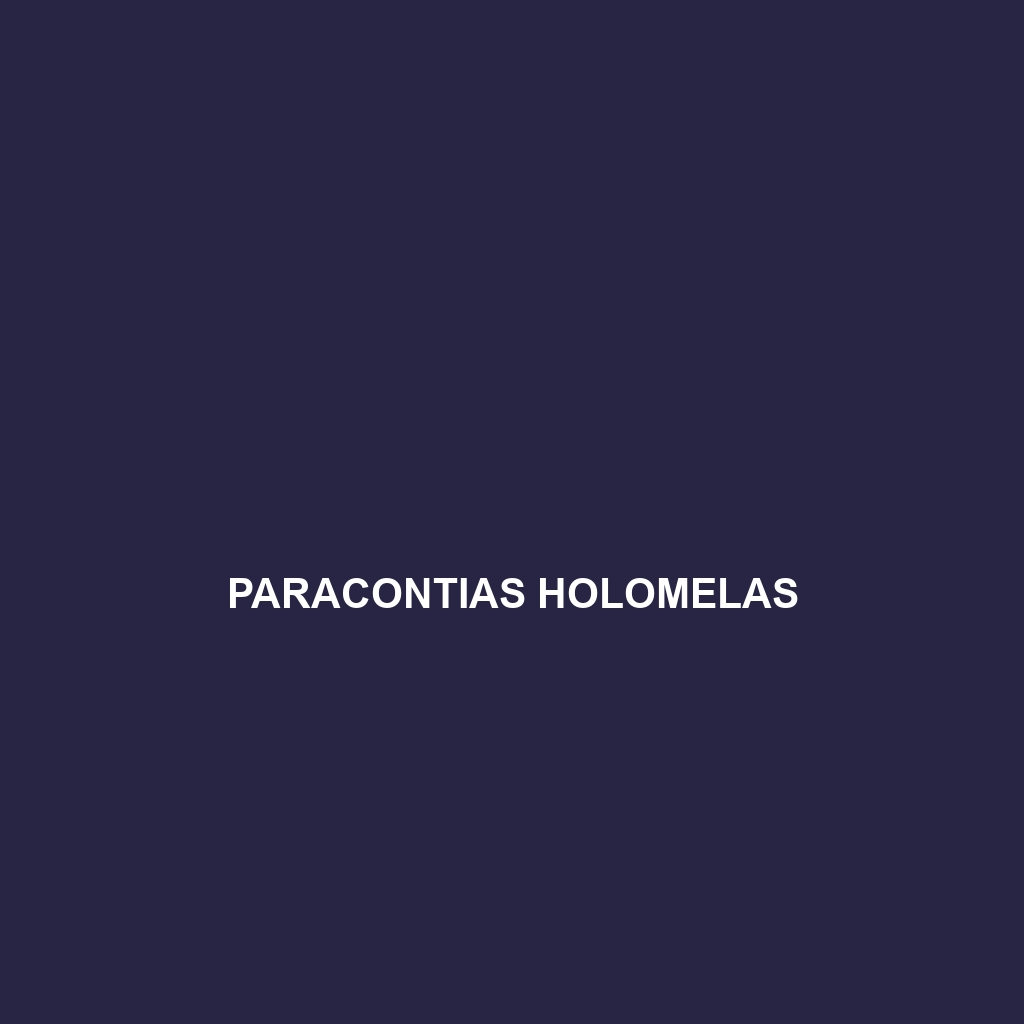Common Name
Paracontias holomelas
Scientific Name
Paracontias holomelas
Habitat
The Paracontias holomelas is primarily found in the unique and diverse ecosystems of Madagascar. These intriguing reptiles thrive in a variety of habitats, including lush rainforests, arid savannas, and dry deciduous forests. The climate in these regions is predominantly tropical, characterized by high humidity and substantial rainfall during the wet season. In contrast, the dry season brings arid conditions that challenge many species. The Paracontias holomelas has adapted to these fluctuating environmental conditions, making it a fascinating subject of study for ecologists and herpetologists alike.
Physical Characteristics
Paracontias holomelas is a strikingly unique species of skink. It typically measures around 15-20 cm in length, with a slender, elongated body that facilitates its movement through the underbrush of its natural habitat. The coloration is predominantly dark brown to black, which is a key feature for camouflage against the forest floor, often speckled with lighter patterns that help it blend into the leaf litter. A particularly captivating characteristic of this species is its smooth, shiny scales, which can reflect light and serve to confuse potential predators. The Paracontias holomelas also possesses reduced limbs, which further distinguishes it from other skink species.
Behavior
In terms of behavior, Paracontias holomelas exhibits fascinating patterns of activity largely characterized by its nocturnal behavior. These skinks primarily emerge at night to hunt for food and explore their environment. Socially, they are somewhat solitary, preferring to remain hidden beneath leaf litter or logs during the day. During mating season, however, males engage in elaborate mating rituals, which may include displays of body coloration and pheromone release to attract females. This behavioral adaptation not only aids in reproduction but also ensures the continuation of their genetic lineage in the dense, competitive environment of Madagascar.
Diet
The dietary habits of Paracontias holomelas are highly specialized. These skinks are primarily insectivores, feeding on a variety of insects such as ants, termites, and beetles. This diet plays a crucial role not only in the skinks’ survival but also in controlling insect populations within their ecosystem. Their foraging technique often involves searching the undergrowth and fallen leaves, utilizing their keen eyesight and agile movements to capture prey swiftly. Occasionally, they may consume small arachnids and other invertebrates, but they primarily rely on their insect diet.
Reproduction
The reproductive cycle of Paracontias holomelas is fascinating. Mating typically occurs during the warmer months of the year, aligning with the rainy season when food resources are abundant. After a gestation period of about 2-3 months, females give birth to live young, a rare trait among reptiles. Each litter can contain anywhere from 2 to 6 offspring. Maternal care is not extensive, as the young skinks are relatively independent from the moment of birth. Parental instincts may be minimal, but females are known to select suitable environments for giving birth, ensuring that the young have a better chance of survival in the wild.
Conservation Status
The conservation status of Paracontias holomelas is currently listed as vulnerable according to the International Union for Conservation of Nature (IUCN). The primary threats to their survival include habitat loss due to deforestation and agricultural expansion in Madagascar. Conservation efforts are being initiated to protect these unique ecosystems and ensure the survival of Paracontias holomelas, including habitat restoration, protected area designation, and public education on the importance of biodiversity. However, these efforts face challenges due to the socio-economic factors affecting local populations.
Interesting Facts
One of the most intriguing aspects of Paracontias holomelas is its adaptation to the treacherous motion of navigating through leaf litter and tight spaces, which is facilitated by its elongated body and limbless structure. Additionally, this species has developed the ability to secrete a mild toxin that may deter potential predators. Unlike many other reptiles, they rely on stealth and camouflage rather than speed to evade threats, making them a unique study in adaptation strategies within Madagascar’s ecosystems.
Role in Ecosystem
Paracontias holomelas plays a vital role in its ecosystem by acting as both a predator and prey. As an insectivore, it helps maintain the insect population, contributing to the ecological balance within the forest. Furthermore, as a natural prey item for larger animals, it provides sustenance for various predators in the food chain. The species also interacts with the leaf litter community, which contributes to nutrient cycling in the forest floor. These interactions highlight the importance of Paracontias holomelas in sustaining the overall health and biodiversity of Madagascar’s unique ecological landscape.
